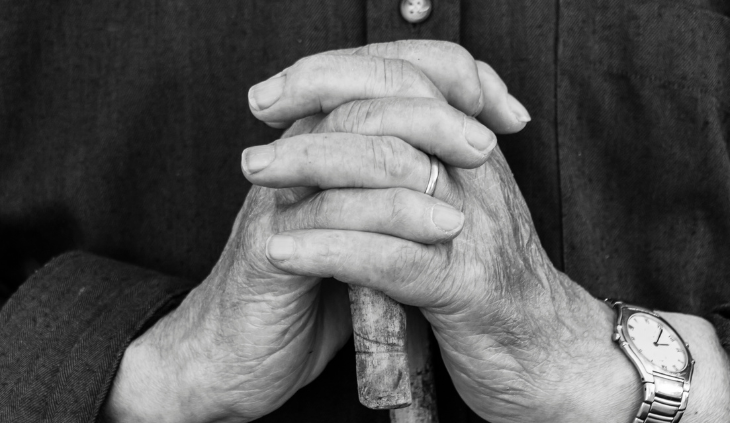Age Related Conditions on Your Fingernails
Much has been said and written about old
age. There are endless clichés about gray hair, wrinkles, and wisdom.
There are also many companies making a profit off our wishes to remain
young forever. But we think the key is to maintain health and longevity,
rather than upkeeping an appearance. This relies on a principle saying
that if you’re healthy and balanced, it will shine through.
In this article, we'll discuss age-related conditions that can occur on
your nails. We'll offer some remedies and some possible nutrition-based
causes of some of the problems.
What happens to nails as we age?

Nail growth rate starts slowing down at age
25. Most people will notice age-related conditions on their nails
around 40. With age, you might experience changes in texture, thickness,
strength, and growth rate. The color may change from translucent to
yellow or opaque. This doesn’t necessarily mean there is a problem, this
could simply be due to slower growth, leading to prolonged exposure to
environmental stressors. If you feel though, that this may be a sign of
certain malfunctions in your inner organs, consult with your physician.
One of the most common age-related
conditions you can expect Is called onychorrhexis. These are ridges
formed on your fingernails, which are essentially wrinkles on the nail
bed. Onychorrhexis may also be caused by nutritional deficiencies and
hormonal changes.
With age, nails may also become brittle. This is due to a depletion of
keratin in the fingernail. As we age we produce less of it. However,
brittle or thin nails could also be a sign of low iron, low biotin, or a
little calcium. The best approach would be to perform a simple blood
test.
On the other hand, your toenails may
thicken with age. This is a condition called onychocytes, in which
fingernail cells pile up due to a slower growth rate. The nails grow
slower because we produce less keratin.
Thickening of the nail may also be caused by less-than-optimal blood
circulation, trauma, or fungal infections.
A less common age-related nail condition is onycholysis, a condition in
which the nail lifts off the nail bed. This condition lasts months until
a new nail has grown over. This may take up to a year this condition
can be caused by trauma, injury, allergy, fungus, psoriasis, severe
malnutrition, or old age. While this may sound horrible, the lifting of
the nails from the nail bed is usually painless. Consult with your
physician to identify the underlying reason for the onycholysis.
What can be done?
Some general daily care tips would be:
- Hydrate daily with cream, oil, or ointment. Make sure you massage into the cuticle as well.
- Cut hang nails, rather than pulling on them
- Use acetone-free nail polish remover, and if you have access to it, use natural nail lacquer us as well.
- Clip your nails after the shower, when they’re soft. Use a sharp clip.
- If you file your nails, up for a glass file which will create a smooth finish rather than split the nail.
Some DIY remedies
Replenish omega-3 fatty acids for dry skin:
- 6 tsp. water
- 2 tsp. ground Chia seeds
- 1 tsp. seaweed
- 1 tsp. olive oil.
Apply to skin for 15 minutes and wash off.
Replenish skin barrier and microbiome:
- 1egg yolk
- 1 tps. honey (preferably Minooka honey)
- 2 tbsp. olive oil.
Apply to hands twice a week, 20 minutes at a time. Wash away without soap. This one is recommended right before bed.
Natural, affordable treatment of fungus:
- Apply topical tea tree essential oil after an Epsom salt bath. Do this daily.
- Apply a drop of colorless iodine daily. Keep your feet dry and consume a low-carb diet, as fungus thrives on carbs.